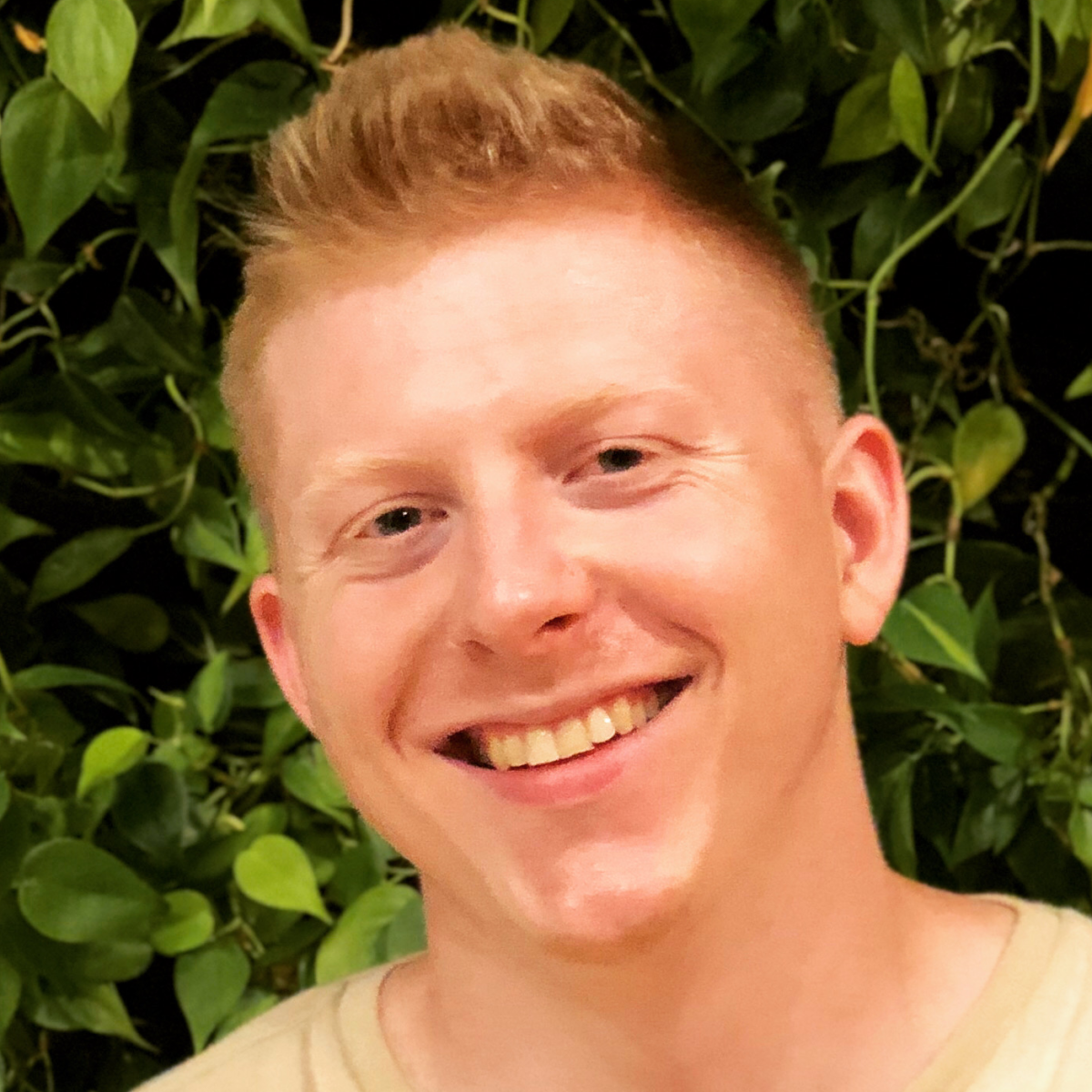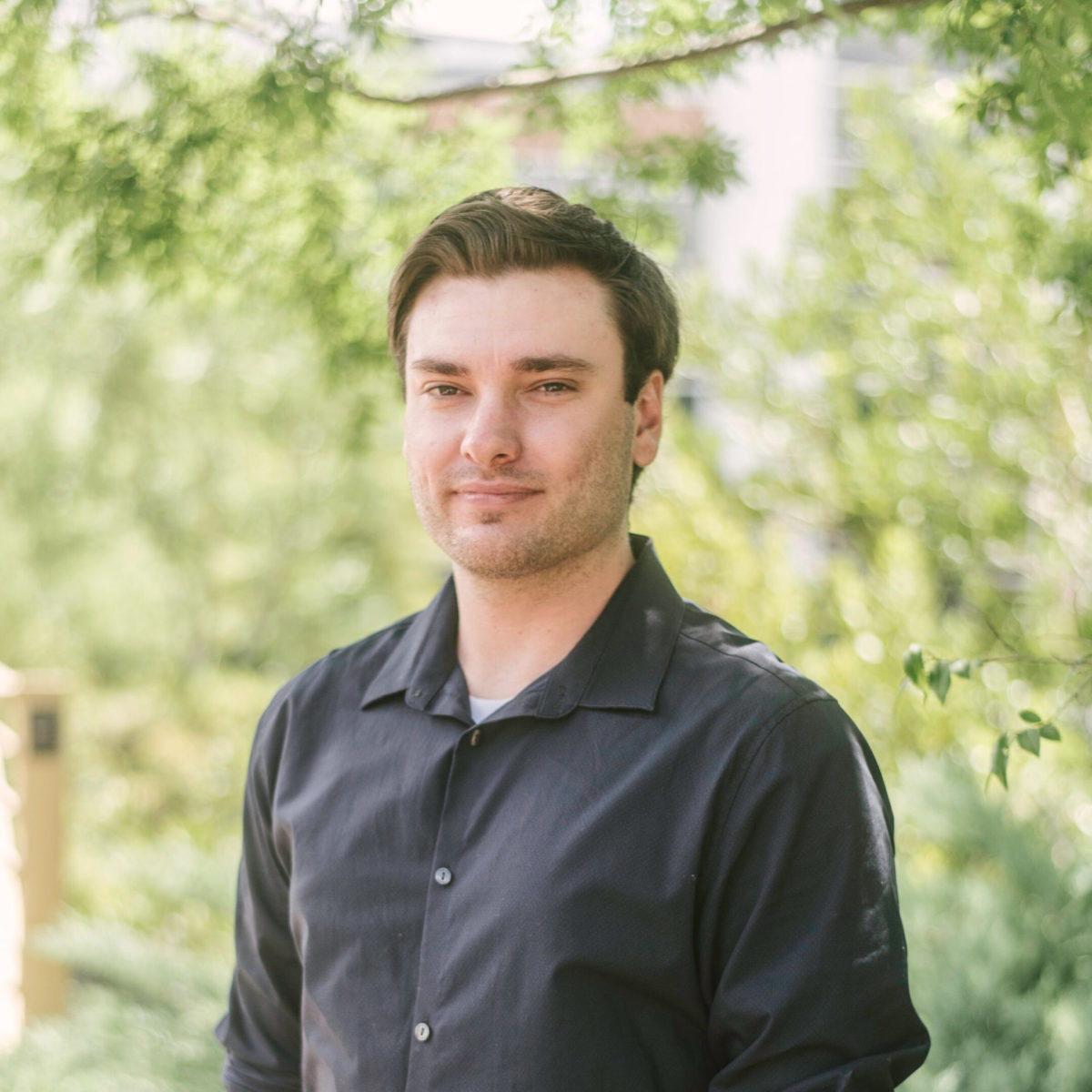Steve’s Stage 3C Non-Seminoma Germ Cell Metastatic Testicular Cancer Story
Steve shares his stage 3C non-seminoma testicular cancer story and undergoing treatment, from BEP chemotherapy, testicle removal surgery, RPLND surgery, and hormone injections.
In his story, Steve also highlights how he navigated issues like fertility preservation, losing his hair from chemotherapy, and the importance of finding a community after a cancer diagnosis. Thanks for sharing your story, Steve!
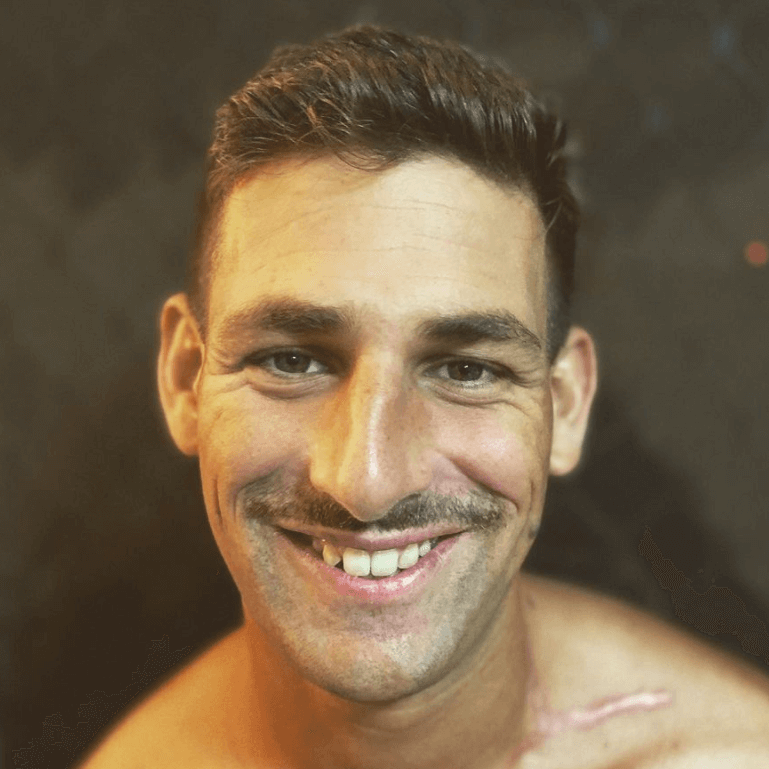
- Name: Steve L.
- Diagnosis:
- Testicular Cancer
- Non-Seminoma Germ Cell
- Staging: 3C, highest stage in testicular cancer
- Treatment:
- Chemotherapy: BEP
- Bleomycin (B)
- 1x a week, every week for 9 weeks
- Etoposide & Cisplatin (EP)
- Day 1 of 1st cycle
- 4x a week once every 3 weeks
- Bleomycin (B)
- 1st Surgery: Orchiectomy of right testicle
- 2nd Surgery: RPLND – lymph node removal in abdomen
- Tumor dissection in neck
- Hormone Injections:
- Testosterone injections
- Injected into glutes or quads once every 10 to 12 weeks
- Testosterone injections
- Chemotherapy: BEP
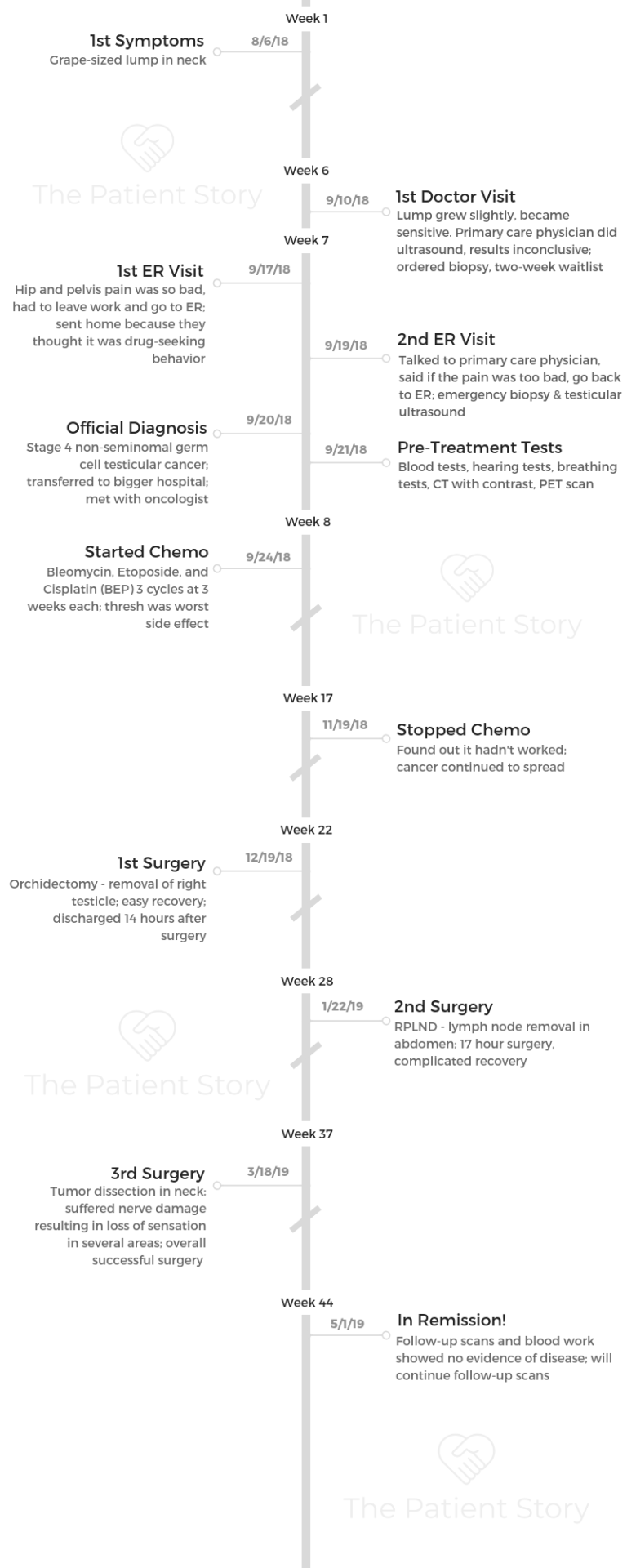
- Diagnosis
- Pre-Treatment Testing
- BEP Chemotherapy
- Testicle Removal Surgery (Orchiectomy)
- Can you describe the orchiectomy?
- What was the recovery like?
- Describe the RPLND surgery
- What do you remember from waking up from surgery
- How long was the recovery from the RPLND?
- Did the RPLND leave you with any long-term side effects?
- What advice do you have for someone who’s going to have an invasive surgery?
- You had a tumor dissection in your neck as well. Can you walk through that?
- Quality of Life
- Support & Survivorship
This interview has been edited for clarity. This is not medical advice. Please consult with your healthcare provider for treatment decisions.
Focus on really little improvements. There are way more aspects to it than you can even think of,
But just be patient. You will get back to your new normal. I’m by no means normal, but I’m at my new normal. There are things you don’t get back, but there are things you do.
Steve L.
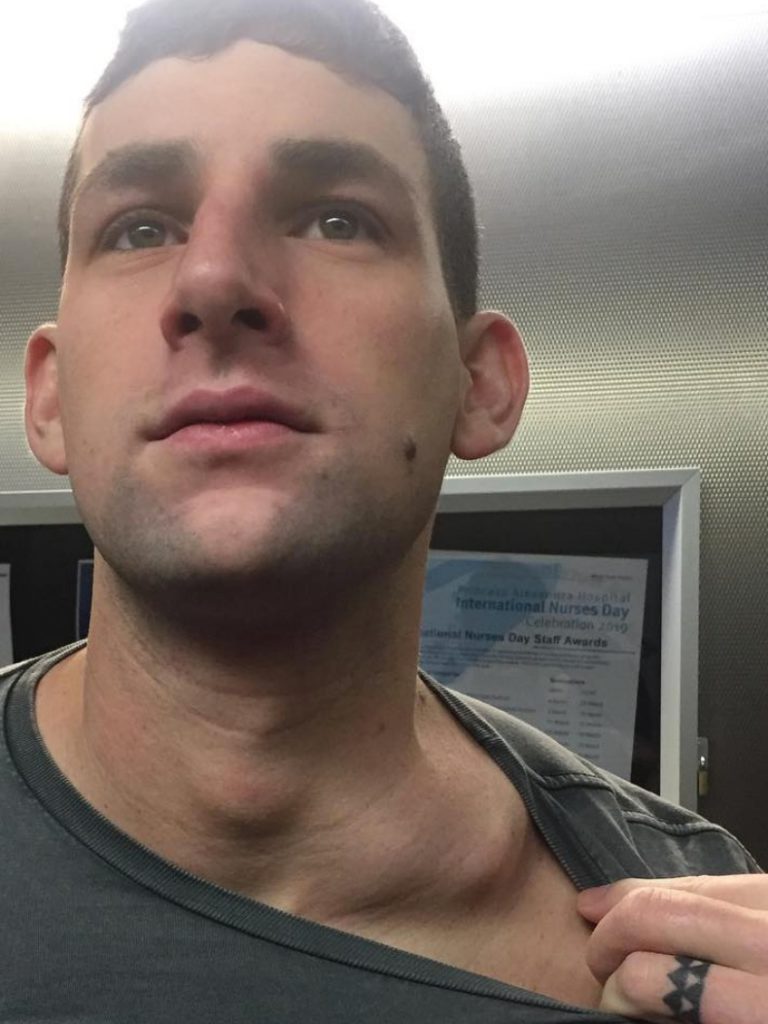
Diagnosis
What were your first symptoms?
On my neck, I noticed a grape-sized lump in about mid-August of 2018. I assumed I was just getting sick and ignored it.
Then it continued to grow slightly and get more sensitive. I went to my primary care doctor and said, “Hey, I have this lump. What’s going on?”
She wasn’t too worried about it. She said that’s where my lymph nodes were and they can get inflamed when you’re sick and told me not to worry too much. She said, “Since it’s been a few weeks, let’s just get an ultrasound to be safe.”
Describe the next tests and scans you had to undergo
I did the ultrasound and the results were inconclusive, so they wanted me to go for a biopsy where they cut a small piece out and see what it was.
The wait list for that was about two weeks, and five days after the ultrasound, I started getting really bad pain in my hips and pelvis, and I assumed it was overuse from going to the gym.
I ignored that for a few days to the point that I couldn’t even walk. I was sitting at my desk at work, and when I went to stand up, I couldn’t move. I was in so much pain.
My wife came and picked me up from work, and we went to the emergency room. They thought that I had drug-seeking behavior. They knew I was in pain but didn’t have any trauma like a car accident, so they thought I was just looking for some pills.
They gave me a small amount of pain pills while I was there and sent me home. That was a Monday. That Tuesday I went to work thanks to those painkillers they’d given me. Being a P.E. teacher, though, I’m moving around a lot, so halfway through the day, I had to go home.
I knew there was something wrong. I went to my primary care physician. She said if it got really bad, go to the emergency room and see what happens. I went home Tuesday night, and I got up on Wednesday morning, and I knew I had to go to the hospital.
How did your doctors know you had cancer?
I had the lump. They scanned it. The radiologist who did it said she couldn’t tell me anything and that I needed to go see my doctor. They wanted to make sure they had a specific type of cancer to tell me before just diagnosing me with cancer. That’s why they rush ordered a biopsy.
They knew I had cancer, but they didn’t know what kind it was.
They sent me for the emergency biopsy, waited a few hours, and they sent me for a testicular ultrasound. When they did the biopsy, I knew something was wrong.
I had a friend who had lymphoma and I thought for sure I had lymphoma. They came back to my room in the ER, and they told me they wanted to do an ultrasound of my testicles. I thought, “That’s weird, but okay.”
The doctors came back about an hour later and said, “You have non-seminoma germ cell testicular cancer on your right testicle.” They took my hand and showed me right where it was.
It almost felt like a fried egg. It was weird because I had joked about that for years; I had had that for years. I just thought that’s what testicles felt like.
That was the Thursday after the first symptoms. I got transferred to another hospital that offered cancer services. Then on that Friday, I did a bunch of baseline tests. Things like breathing, hearing, and other systems that can be damaged through type of chemo I was going to get.
I also did fertility testing that day and banked some sperm. Saturday and Sunday was pain management, and on Monday I started chemo.
What is the needle biopsy like?
It was a long needle like a pen. They would click a button and there was a claw that would reach in and grab a piece out. At the end of that biopsy, I just had a small hole as if I’d just gotten an injection there.
What is the testicular ultrasound like?
They lay you on a bed. There’s a gel they use like on a pregnant woman’s belly. They had me hold my penis up, and they put it on my testicles and used the little wand and scan around. It took maybe 15 minutes. He took different pictures of different angles.
It was quick, but it was a little bit awkward. It wasn’t a big deal. The results took a couple of hours. They knew from the neck biopsy that I had cancer, but this ultrasound was just confirming the location of the tumor.
How did you process your cancer diagnosis
The doctor came in and told me I had stage 3C testicular cancer. She said she needed to transfer me to another hospital because they were the one that offered cancer services in the area.
It’s not that she was robotic, but it was a very routine conversation. It was very much, “This is what you have. This is what we’re going to do. The ambulance is waiting and will take you there.” She was gentle about it, but it was a very blunt conversation.
After all the tests I had, we were prepared for it. Then it was just about waiting to see what kind I had. I said, “Yeah, I figured. What’s next?” We went straight to figuring out what the action plan was. That may be because I was expecting her to say that though.
I didn’t know a whole lot about cancer, and I would say I still don’t. I knew that she wasn’t an oncologist and the ER we went to was in a small hospital.
They were transferring me to a much bigger hospital that had an oncology department and they had me getting in an ambulance to get there instead of driving the 20 minutes.
They wanted me to get there before the oncologist went home for the night. So, since she told me I was going to the other hospital to see the oncologist right then, I knew it was pretty bad. I knew not to ask her a lot of questions and saved them for the oncologist.
»MORE: Processing a cancer diagnosis
Pre-Treatment Testing
What were the next steps after diagnosis?
I had to meet with the oncologist. He was a germ cell oncologist. From my understanding, that kind can happen in different areas of your body, so he specializes in that. I met with him that night about 6 or 7pm. He was a really good guy.
He basically said we were going to start chemo as soon as possible but since it was a weekly schedule, it didn’t make sense to start on a Thursday, so we’re going to wait until Monday. I asked him what the plan was until then.
From there, the next day I had a tremendous amount of testing done. The chemo has a potential to damage a lot of your systems, so they had to ensure they weren’t doing too much damage.
Do you have any advice for someone who has anxiety about their treatment plan?
It sounds a bit patronizing, but just don’t stress. In the end, you’ve got cancer. That sucks, but it is what it is.
Try to understand that the science is so advanced now and the medical field is advancing exponentially every year, so even what I’m saying now probably won’t apply two years from now.
Medical science is so advanced – that’s the main thing to keep in mind. Obviously I was stressing because they had to do all these tests, but try to relax. It’s going to be okay.
What kind of testing did you have to undergo before going through the BEP chemotherapy?
About 15 years ago, there was a 95% death rate with testicular cancer. It was one of the more deadly forms of cancers around the turn of the millennium and into the early 2000’s.
There was a doctor that developed a new chemo cocktail – bleomycin, etoposide, and cisplatin (BEP). Now, that’s the standard for all testicular cancer patients. It’s taken the survival rate from about 5% to 90% or so.
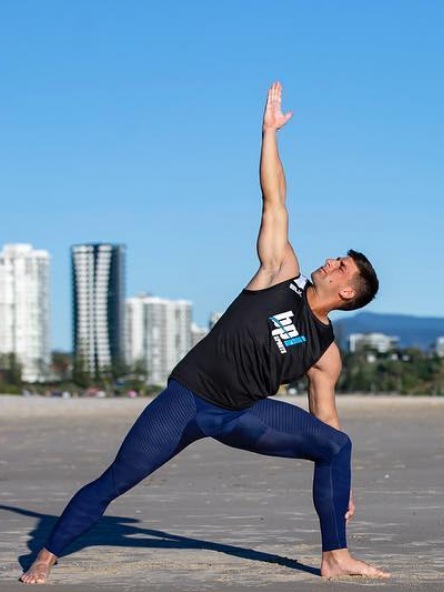
It is horrific. They tell you straight up. It’s really intense, and because of that it can be really damaging to a lot of your other systems, especially your lungs and your hearing.
They put you in a pod and test your ability to inflate your lungs and how hard you exhale and they continue those tests each week during chemo. For me, my capability degraded so quickly that I had to stop chemo for a week. They needed my lungs to have time to regenerate.
They obviously do a lot of blood tests as well, but the other big one is they test your hearing. One of the drugs in BEP causes you to get tinnitus, the low-level ringing in your ear.
They put you in this sound booth, play little dings and make you click buttons when you hear them. They also continue that through chemo to see how your hearing is degrading. If they have to, they delay a week.
They also did a PET scan and a CT with contrast dye to see where the cancer was in my body.

What is the CT with contrast like?
I’ve had similar scans for torn ligaments and sports injuries. Essentially they get you to strip and wear one of those gowns. You lay on the table, you’ve got an IV and they get you to just lay there as still as you can. They send you back and forth into this magnet thing that’s the scanner.
They inject you with contrast dye which is very interesting. It tastes like your mouth is full of pennies, and you feel like you wet your pants. They warn you of that before they inject it, and I thought they were crazy. That’s exactly what it’s like though. It’s such a real sensation.
I’ve had almost a dozen of those scans with contrast and during every single one of them, I still check to see if I wet my pants because it just feels so real.
It’s as simple as that though. The doctors look at the scans and tell you what’s going on. For me, the cancer was in my right testicle. It had not spread to my left, but it had spread up.
The hip and pelvis pain were from some lymph nodes just in front of my spine that the cancer had metastasized to. I have a big scar from that surgery. It had metastasized to my neck, but it hadn’t spread to my brain.
BEP Chemotherapy
What was your chemo regimen?
Most people do three or four 3-week cycles for a total of nine or twelve weeks. Every Monday, you get B. It doesn’t make you nauseous or anything like that – it’s the one that’s bad for your lungs, but it doesn’t give you a lot of physical symptoms.
Then you do EP on Monday through Friday of week 1. Weeks 2 and 3, you have off from the EP, but you still go in and get the B every Monday for the duration of your chemo. So, week 1, Monday through Friday you’re there pretty much all day.
They admitted me to the hospital those weeks. You’re on hydration bags through the IV for two hours. The B takes about an hour. The EP takes about two hours each, and then you have another two or three hours of hydration.
If you add that all up together, it’s at least ten hours of infusion every day that week. I was admitted in the chemo ward for the whole week basically.
Chemo is essentially just poison, so they were measuring my urine output to make sure I was getting enough hydration to flush out my body.
Also, because BEP can be really bad as far as nausea for most people, they wanted to keep track of how much I vomited so they could make sure I wasn’t dehydrated.
How were the side effects during weeks one, two, and three
Week 2 and 3 are the “off” weeks, but you still have the B (bleomycin) on Monday. It’s fairly simple though. You go in and get about an hour of hydration, and you get an hour of B. The final hour, they just monitor you.
I found that I was really sick during week 1. That feeling spread into the first half of week 2 until about Thursday or Friday, and then during week 3 I felt pretty good.
I could walk to the grocery store a couple of blocks away if I wanted to, I could be on my computer, and I could sit up on the couch without too much of a struggle. Whereas, week 1 getting out of bed to use the bathroom was difficult.
Can you describe the side effects you experienced?
I vomited a lot. I was really sick a lot. I remember waking up once and throwing up all over myself and then I laid back down and went to sleep. You can imagine how dangerous that can be. My wife pretty much carried me to the shower and rinsed me off.
I also got a lot of diarrhea. It was coming out of both ends pretty steadily. I got something called thrush, which is an infection in the throat. It makes everything taste like moldy bread. It’s like a fungal infection in your throat.
As you swallow, whatever you eat gets coated in the infection, and that made it really terrible to eat. It was really unenjoyable and gross to eat or drink.
Drinking juices helped a little bit, but if I drank water, it just tasted awful. So, I lost a lot of weight. I lost almost 60 pounds. That was over the course of about four weeks. I was really tired as well. I basically slept about 20 hours a day. I would have trouble getting from the bed to the bathroom and back. The fatigue level was definitely intense.
Even though you’re laying down, your cardiovascular system feels like you’re running a marathon. There’s the hearing side effects as well. You’re laying there in silence, but there’s this low-level ringing in your ears.
So, during the first week and the first half of the second week, I was pretty down. The end of the second week and the whole third week of each cycle was pretty nice. I could sit on the couch and watch TV.
During the third week, I would even get up and try to walk around. I wasn’t having any diarrhea, and I wasn’t throwing up. The headaches subsided a bit as well. The hearing and the breathing issues stayed – that’s a longer-term thing. The rest subsided during the third week.
»MORE: Cancer patients share their treatment side effects
Did anything alleviate the side effects?
No matter what I ate, I threw up. I didn’t find any help with that. Diarrhea is diarrhea. There’s nothing you can really do about it. Just hydrate.
The thresh was really bad for me. That was the worst aspect of it. Drinking juices instead of water helped. The infection didn’t taint the flavor of the juice as much as it did the water.
Similarly with food, eating extreme tasting foods – candies and things that had a really strong taste to mask it. The worst for me was eating carbohydrates. If I ate bread or pasta, it made the moldy taste worse.
»MORE: Chemo Diet: How To Stay Healthy During Treatment
Did the cycles get better or worse as they went on?
My first week during my first cycle was the worst because I just wasn’t prepared. I didn’t know what I was walking into. You change clothes, lay down, and get pumped full of poison. I wasn’t prepared, and it was brutal. The second cycle was okay because I was more prepared mentally.
The third cycle got pretty bad. They’re pumping you full of this stuff, you get a small reprieve, and then you repeat. It seemed like the overall volume of it built up, so by the third week, it was quite rough. During that cycle, it took until the beginning of week 3 for me to start feeling better.
»MORE: Read more patient experiences with BEP chemotherapy
Rare situation: the chemo didn’t works
This is out of the norm to the point where they’ve written about me in a medical journal since this, but the three cycles were seen as unsuccessful based on the blood work.
When they check your blood, they check two main things: your AFP and HCG. Those are the two tests they do for testicular cancer. Mine were elevated. They should be less than 5, and mine were in the 300-400 range. I don’t know what that means, but it sounds high.
They were checking my blood throughout the cycles. It wasn’t changing. My AFP had risen during treatment, and my HCG had only slightly dropped. They were a little concerned.
They said it can happen, but it was a bit odd. They weren’t really sure. At the end of the three cycles, they sent me for a scan. The scan showed that the cancer had continued to spread through chemo. That’s when they told me the chemo was unsuccessful.
It was really demoralizing to have gone through those nine weeks of agony for them to say it was basically for nothing.
We had to sit down with the oncologist and make a new plan, and that sucked.
The original plan was to do all the cancer, shrink it as much as possible, and then do the three surgeries: the orchidectomy, the lymph node resection, RPLND surgery, and the neck dissection.
They then wanted me to try TIP, which is another chemo. It’s for the small amount of cancers that are chemo-resistant. There are a small percentage of testicular cases that have a mutation and don’t respond to BEP.
They told me I had that mutation, and they wanted me to try TIP. They had to harvest my bone marrow and stem cells and got me ready for it.
They told me that I wasn’t going to have a good time. They said it was more intense than BEP. Because of the mutation and my cancer being chemo-resistant, I went from having about a 90% chance of survival to less than 50%.
I went home with the absolute intention of not doing this chemo and just dying. I told my wife I couldn’t do it again.
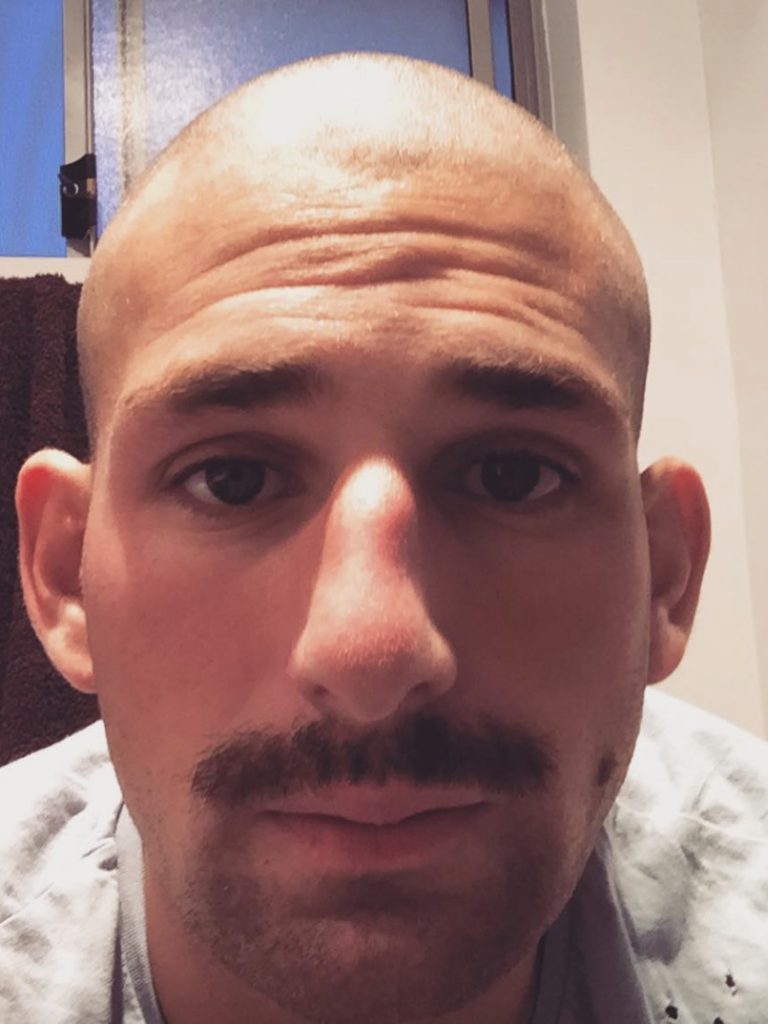
Since I had the mutation, I knew there was a chance the TIP wouldn’t work. I figured I’d be going through all this terrible stuff just to die anyways, so I didn’t want to do it. We had a long talk about it, and I decided that I was going to just focus on pain management and consider myself terminal and enjoy my last few months. As much as I say now I had made my peace with that decision, it’s very difficult to think about.
My wife convinced me to not do that and to listen to the doctors and try. I agreed. The oncologists said that before they started the TIP, they wanted to remove the primary site. That was my right testicle. They said, “Look, if we remove your testicle and then do TIP, the chances of it spreading are lower.”
Testicle Removal Surgery (Orchiectomy)
Can you describe the orchiectomy?
My mom called one day and said, “I’m getting on a plane. I’ll be there tomorrow.” She arrived on a Tuesday evening, and that Wednesday, I had the first appointment with the urologist to talk about the surgery.
That appointment was at about 10am. I walked in and her first question was, “When did you eat last?” I knew then that I was having the surgery that day.
She said, “We’ve looked at your file, we’ve called someone up and cancelled their surgery, and we’ve scheduled you for tonight.” My mom happened to be there, and that was great.
I waited around until about 7pm, and they came and got me for surgery. She said, “I just want to confirm it’s your right side.” I confirmed, and she told me to put a mark on my right leg with a sharpie, and I did.
The surgery only lasted a few hours. The scar is about 2.5 inches on the inside of my pelvis from my hip. They go in through the abdomen, and they take out your testicle.
That was pretty easy. I did wake up after surgery that evening, but I don’t remember. I woke up the next morning and was discharged.
What was the recovery like?
Because they cut through your abs, when you cough or laugh it hurts a bit. It really wasn’t invasive though. From the time I had the surgery to the time I was discharged, it was about 14 hours.
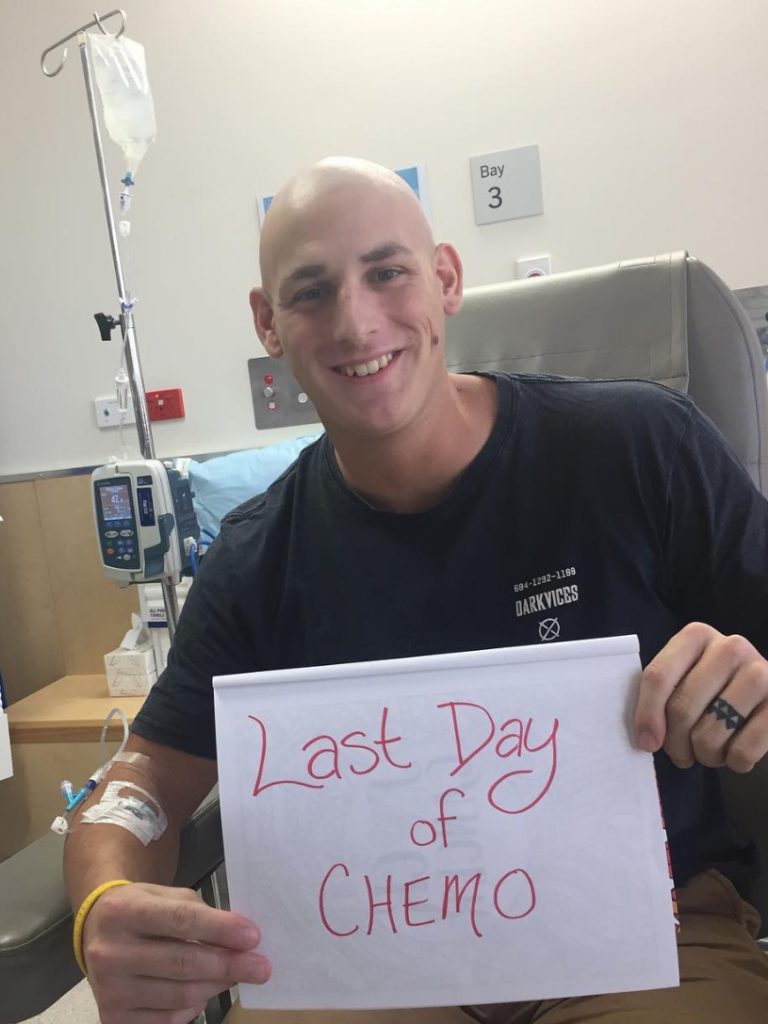
I don’t even think I got put on any additional painkillers specifically for the surgery. I was already on some painkillers for pain for the lymph nodes that were pushing against my spine. I didn’t get put on anything else. The surgery was pretty minor honestly.
I chose not to get a prosthetic for a couple of reasons. Number one, I’m married. I don’t care. My wife doesn’t care. Number two, they told me the chances they’d have to take the left testicle as well in the next few years was quite high, so I didn’t think it mattered.
If I was single, I probably would’ve gotten it, but like I said, I don’t care. It’s almost become a joke now with me and my buddies.
Two weeks later, I had another scan and more blood tests. My blood markers had dropped significantly. That made them hopeful. They figured that because they got rid of the primary site, there wouldn’t be any more spreading. That did end up being the case.
They decided they would wait on more chemo until after they did the RPLND. They still said I would need TIP, but they said they wanted to wait until after the RPLND. That was a huge relief.
Describe the RPLND surgery
I had the orchidectomy in mid-December and the RPLND was scheduled for the 22nd of January. The growth in my abdomen was so big, there was only one surgeon who was comfortable doing it since there was such a high chance of paralysis or death. He was on a family holiday, but as soon as he came back, we did it.
My mom had gone home. She was here for about two weeks. She went home before Christmas, and they decided my dad would come out.
With RPLND surgery, there’s a high chance of needing a kidney transplant. When I was a kid, I had an uncle who needed one. We had all gotten tested to see who matched for each other. My dad was a kidney match for me, so we knew he could donate if he needed to, and he came out for the RPLND.
The day before the surgery, my doctor scared the absolute hell out of me. He’s a wonderful guy and a wonderful doctor; I have nothing but good things to say about him, but he sure did scare me.
He said, ‘There’s a 50-percent chance you’ll be paralyzed from the waist down. High chance of you dying. There’s a 75-percent chance we’ll be removing one of your kidneys and a 30-percent chance we’ll have to take both.’
I was just like, ‘Oh. Okay. Cool.’
He kept going on and on with this list of terrible things that could potentially happen, and he finished it off by saying, ‘If we don’t do this, there’s a 100-percent chance you’ll die.’
I went home that night and hung out with my wife. We watched a movie or something, and I was back at the hospital at about 5am because they were planning for the surgery to take at least 12 hours. I got all scrubbed down, went into the surgery hall, and they put me to sleep.
What do you remember from waking up from surgery
I woke up about 10 days later in the ICU. I’d been in a medically-induced coma for about a week because the surgery was so invasive. There were a lot of issues during the surgery they had to take care of.
The amount of cancer I had in my body cavity. was about the size of two and a half mangoes. The cancer was surrounding my spine, so when they cut it out, there was a high risk of nerve damage. It was completely engulfing.
I had no cancer in my kidney, but it was up against it and contorting it. Your kidney is like a ball with a tube coming out of it, and it was completely around the tube. It also had completely wrapped around the vena cava.
Basically, the surgeon had to cut me open, remove my digestive tract, put it on ice, and then essentially worked on very slowly pulling all this cancer out of my body. The surgery wound up taking 16 or 17 hours – much longer than anticipated.
They had to cut out my left kidney, and put it in an ice bath. In doing that, the kidney shrunk but the tumor stayed the same size. In doing that, they were able to get the tumor off and implant my kidney back, which is great. I got to keep both my kidneys.
It was a very long, invasive surgery, and the surgeons did an amazing job. I was in the hospital for just over a month. When I came home, I couldn’t stand erect. Since they cut your abs, you can’t stretch them, so I had to slouch for a while.
I had a few other issues. I couldn’t eat. When they put my digestive tract back in, they had to sew it all together, so I had to have a feeding tube, oxygen tube, and a vent.
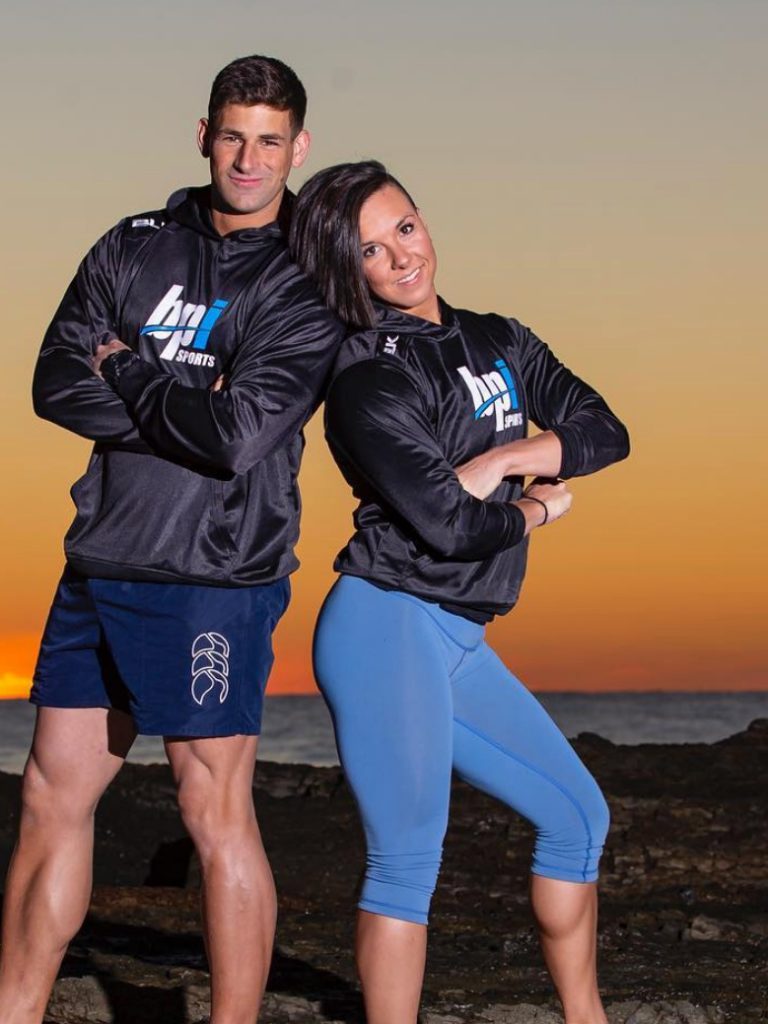
How long was the recovery from the RPLND?
I spent a little less than two weeks in the ICU and then about a month in the actual hospital. Even now, six months later, I still work on a weekly basis with a physical therapist to get my posture back to normal after all the cutting and sewing.
They didn’t send me home until I was able to hydrate on my own and breathe on my own. I got sent home with an NG tube, which goes up your nose and down your esophagus and you pump into.
Think like the world’s strangest protein shake you pump through a syringe, up your nose, and down into your stomach. I had that for like a week or two. I was finally able to eat and got that taken out.
I saw the oncologist during that time and found out that the biopsy showed that the cancer was going to turn into a teratoma, which is a non-malignant cancer. It’s cancer that cannot spread anymore.
The blood tests and scans showed that since the first surgery, my blood markers had dropped significantly and then again since the RPLND.
The team said that every bit of cancer they were removing was bringing my levels down, so they wanted to wait on chemo and see what happened after the surgery on my neck.
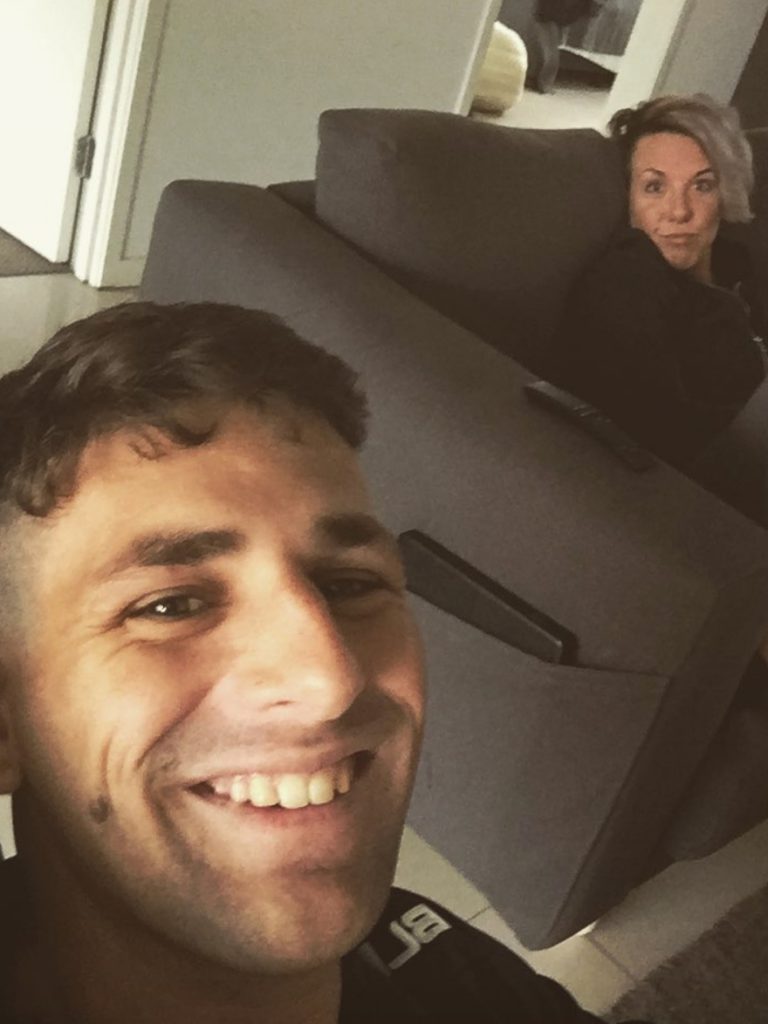
Did the RPLND leave you with any long-term side effects?
During my RPLND surgery, they were great in preserving nerves, but there were some that were damaged. I have a patch on the side of my ribs where I have no feeling at all – similar to my neck.
There’s another patch on the inside of my thigh. I can’t curl the toes on my left foot. I can walk normal, but I can’t curl the toes in my left foot.
I also have something that’s very common after RPLND. It’s called retrograde ejaculation. When I go to ejaculate, nothing comes out.
In the male reproductive system, at the base of the penis, there are a couple of different tubes that feed into your urethra – one coming from your bladder and one from the vas deferens.
When you’re going to urinate, there’s a muscular flap there that covers your vas deferens and allows urine to flow. When you’re going to orgasm, the muscular flap flexes the other way, closes off your bladder, and opens up your vas deferens into your urethra.
My muscular flap is damaged, which is a fairly common complication after an RPLND. So, when I orgasm, nothing comes out. There’s no ejaculation of fluids. Because of the treatment I went through, I don’t produce sperm in my remaining testicle.
The semen is produced in the prostate, and that still works, but when I go to ejaculate, it just spills into my bladder. When I pee after sex, you can see there’s semen in the urine, which is weird.
My remaining testicle is useless. It’s my Christmas tree decoration; it just hangs there. I’m on testosterone injections because the remaining one wouldn’t be strong enough on its own already, but it was also damaged by the chemo and doesn’t work
»MORE: Read more patient experiences with RPLND surgery
What advice do you have for someone who’s going to have an invasive surgery?
Have patience. It’s not something I’m really good at, but I wish I was. After nearly a month of not walking, you have to learn to walk again. Learning to poop again. Learning to pass gas again. Learning to breathe again is huge.
I was on a ventilator, which is like a tube they put down your throat. It’s a machine that breathes for you. I was on that for so long, so learning to breathe again is rough. Although breathing is an involuntary muscle reaction, it’s also voluntary.
Your brain is telling your body to breathe. That signal in my brain sort of switched off for a while since I didn’t have to breathe on my own for a while. When I came off the vent, I had to catch myself and remember to breathe.
Everything is a process, and it takes way longer than you think it’s going to. You have to focus on really little improvements. There are way more aspects to it than you can even think of, but just be patient.
You will get back to your new normal. I’m by no means normal, but I’m at my new normal. There are things you don’t get back, but there are things you do.
You had a tumor dissection in your neck as well. Can you walk through that?
Think about your collarbone. There’s a bit of an indent. The tumor on my neck was popping out, but it was also down into that indent. It was the size of a large avocado. It caused some range of motion issues in my arm. If I lifted my arm all the way up, the tumor would push into my neck and I couldn’t breathe.
The tumor was wrapped around my aorta. They were worried that they were going to have to cut into my chest, remove some ribs, clamp my heart, and put a graft vein in my neck. They told me if they did that, I’d never have use of my left arm again.
That was very tough news to hear because my work is my life. I love being a P.E. teacher. I love being active. The news almost sounded like a sadistic joke. “You’re gonna live now, but you won’t be able to do any of the stuff you like.”
When they did the surgery, they were able to peel the tumor away from the aorta from behind. There were a bunch of nerves that had been tangled in the tumor which even now is causing major issues.
Essentially, from halfway up my neck to about halfway down the front of my shoulder, I have no feeling. I have limited issues with my left arm because of the nerves being damaged in surgery, but all things considered it was successful.
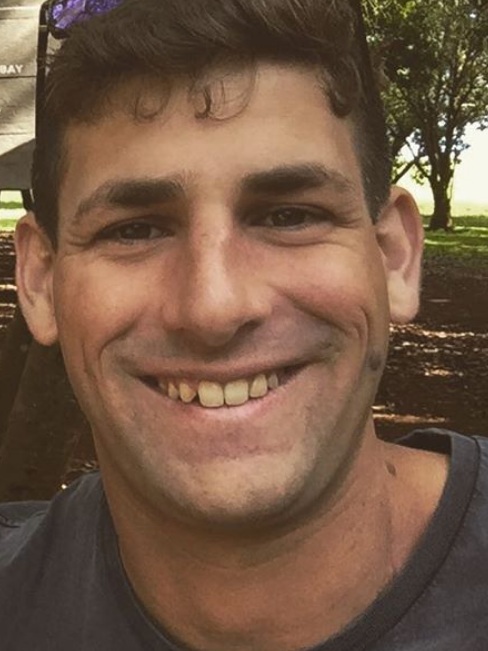
Quality of Life
Was there a talk about fertility preservation
This is fairly controversial, sadly, but my wife and I are very firm on our stance of being child-free. Despite the fact that I was 25, I had a vasectomy booked in December 0f 2018, but obviously I got cancer and cancelled the appointment.
The doctors encouraged me to donate some sperm in case things changed, but I told them we didn’t want kids. They said they store it for free and they’d do IVF for free, so they said I might as well. We agreed to do it, so before chemo, I went in to give sample.
You go into a room, pull your phone out, and give a sample. Simple as that. About halfway through chemo, they asked me to give another sample. That was for medical research. It wasn’t for storage, and I agreed.
Because the cancer was in my testicle and I was pumped full of chemo, my testosterone was exceedingly low at this point. I had hormone-induced erectile dysfunction, so I was unable to donate at that time.
The general process is a sample before chemo, a sample halfway through chemo if they’re opting to volunteer for research, and then a year after chemo, you give one more sample to see if things are working okay.
»MORE: Fertility preservation and cancer treatment
Can you talk about the testosterone injections?
Testosterone controls a very large amount of things in the male body. Without it, you have massive issues including but not limited to things like ED, baldness, fatigue, lack of muscle tone, voice and hair changes, etc.
After chemo, during the surgeries, I wasn’t on any injections. My hair had grown back, but I didn’t need to shave for four months because I didn’t grow any facial hair. I lost all of my muscle tone, and my voice got higher.
I was on a fast-acting testosterone. You take that twice a week. I was doing those at home. They’re very small injections. They’ve since put me on a different type which is much more common. I get that every 10-12 weeks. It’s a very large injection.
I had my first one of those a few weeks ago. The doctor did it for me that first time because it’s such a large injection, but she said I can do it at home if I choose to in the future. You just inject it into any large muscle group.
As a young man, how did you process the fertility and testosterone issues?
Better me than others as far as the fertility goes. My brother has always wanted to have kids. He’s going to be a great dad. It would be much more detrimental for him to have fertility issues than it would be to me because I’ve never wanted that.
My wife told me pretty much the day we met that she has reproductive issues and wouldn’t ever be able to have kids, and we were, “Yeah, high five, cool.”
As far as the testosterone, I’d been diagnosed with low testosterone before. We now know that was a side effect of the testicular cancer which I’ve had lying dormant for years. The doctors said I developed that tumor up to five years ago. I did testosterone replacement therapy a few years ago.
My wife is a professional bodybuilder, so we’ve been in the scene for a while. It didn’t bother me to take the testosterone. It’s pretty common here especially since it’s not illegal and frowned upon like it is in the states.
Describe the hair loss
I went about it in a really unintelligent way. I thought I would take my power back. I thought, “Screw you, cancer. You can’t take my hair. I’m going to do it myself!”
It was week two of the first cycle. I would pull on my hair and nothing was coming out yet. I went to the barber shop and had them just buzz my head as close as they could get it.
My hair didn’t start falling out at that point. It started growing back, and it wasn’t until week 2 of my second cycle. It was almost a month later. At this point, I’d gone from a really short buzz, to it being grown out a bit. I didn’t have anything to grab when it started to fall out, so I was pinching and taking tiny bits out. My wife enjoyed it. She started pinching designs out on my head.
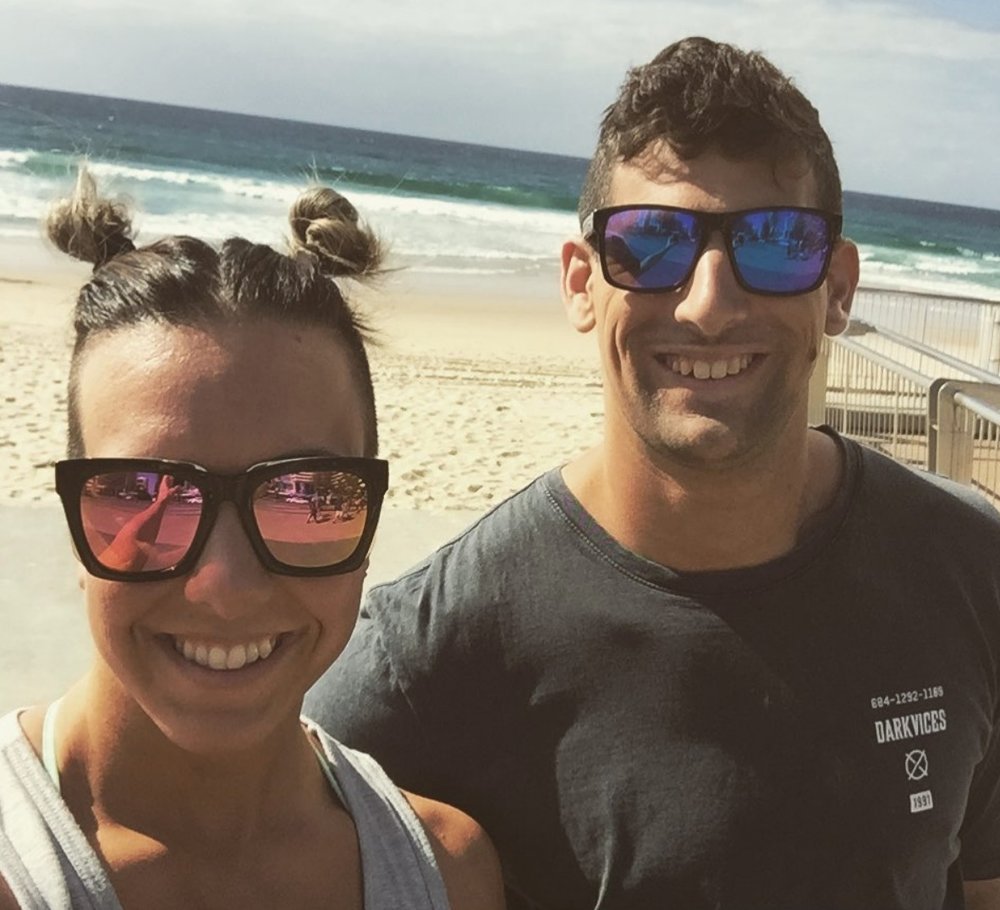
At one point, I went into the shower and tried to scrub it out because it was too short to pull out. I used a loofa, and I got a terrible rash. The hair was really itchy as it was falling out, so I had to use an actual razor and actually shave my head.
It never grew back from there. I was bald for almost two months after chemo. Then it grew back really thin, and it was almost six months after chemo that it started to look normal. Even now, it’s a little thinner than I’m used to on top. Whereas on the sides, it’s coarse and thick like it’s always been.
»MORE: Patients describe dealing with hair loss during cancer treatment
What was your reaction to the hair loss?
I was self-conscious. You look a certain way, and then against your will, you look a different way. I was very happy with the way I had looked, so having a new look forced on me was not awesome. My head was very sensitive, so I couldn’t wear hats.
It was also summer, so I didn’t want to wear a beanie because it would just be too hot. The ball caps were uncomfortable because it was sensitive, so I had to just kind of rock the bald head.
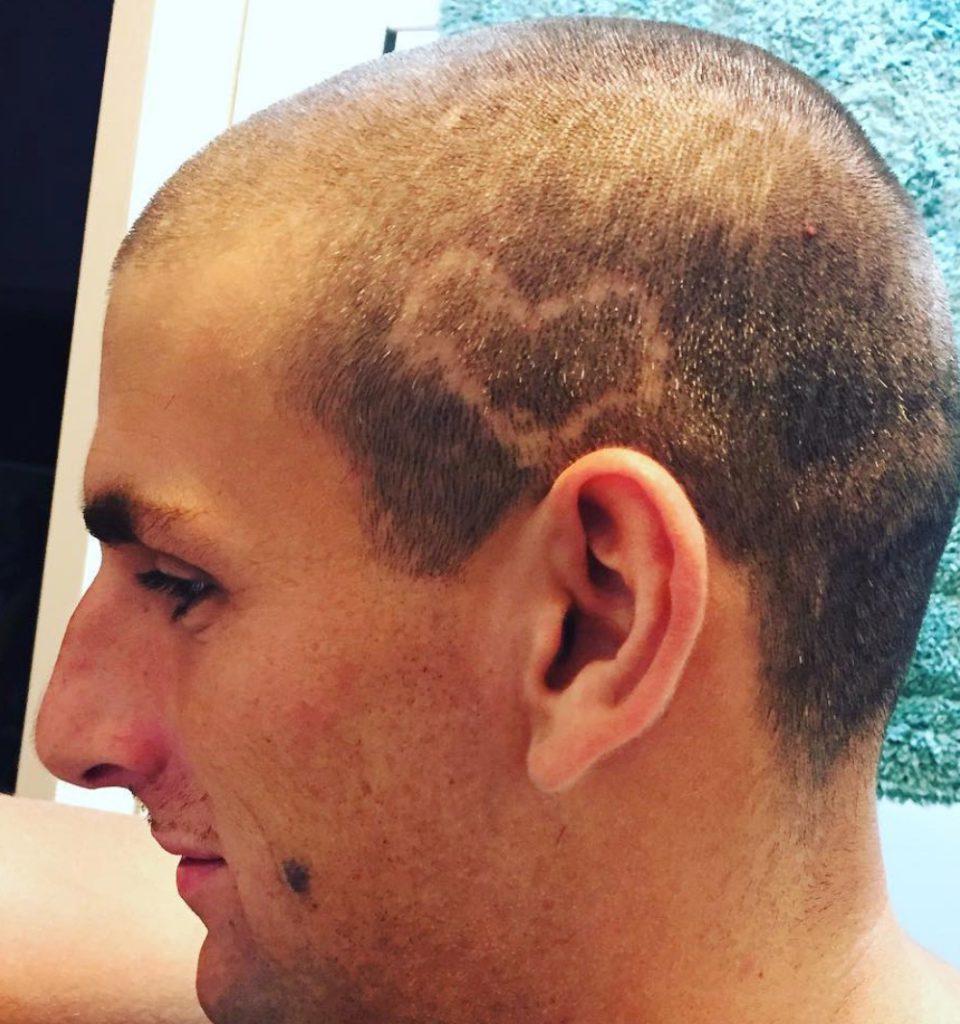
We have a wonderful group of friends here who were encouraging. They said, “Yeah, the bald really suits you. You should shave it even after the hair grows back.” When someone tells you that and you know they’re lying, it’s like, “Thanks for being a good friend, but I know you’re full of crap. I look terrible.”
You get a lot of looks. I turned a lot of heads. Losing my eyebrows was the worst. With chemo-induced alopecia, you lose all your hair. We would go visit family friends who have kids. These are kids I’ve taught.
Normally, I’d walk in and the kids would hug me, but I’d go in and they would hide in the other room like they were afraid of me.
That’s a big mental hurdle to get over. At least it didn’t last forever. Six months looking like an alien, but here I am, and I’m back.
Support & Survivorship
When did you know you were in remission?
I had scans after the neck surgery. They had removed all the cancer from the area as well as more lymph nodes. Since then, the blood work has shown that my levels are in the normal range, and there is no more cancer in my body.
What is your follow-up protocol like?
I did one scan the week I was recovering in the hospital after the neck surgery. I did another about a month and a half later. I have another coming up in a couple of weeks.
Provided everything is clear with my next scan, I’ll go on a quarterly schedule and get scans and blood work every three months for five years. If after five years, there’s still no evidence of disease, I’ll get bumped down to a six month schedule for the rest of my life.
What was the hardest thing you went through?
The psychological aspects of it all. I mentioned earlier I had decided to let the cancer kill me and not go through with the second chemo.
So there’s that. I don’t want to say I tried to kill myself because that’s strong language, but I researched how to tie nooses, and I went out and bought a rope. I was ready to just end things and move on.
Mentally, it really messed with me. I have never had any struggles with mental health before. I’ve always been extremely happy-go-lucky and super friendly and outgoing. I got put on antidepressants and anti-anxiety medication, and I’m since off of all that.
I work with kids because I’m a school teacher, so now part of my return to work process is having to do 10 sessions with a psychologist to ensure that I’m in a good mental state.
They had diagnosed me with PTSD, which I never would’ve thought of, but when they told me it made sense. I had to work on the process of improving my mental state. I would now say I’m in a very good place.
I had those voices in the back of my head saying, “Don’t let cancer kill you. Do it yourself.” The only reason I didn’t kill myself is my wife. I didn’t want to leave her. I didn’t want to put her through that. That’s the only reason I had agreed to continue with treatment.
Chemo sucked, surgery sucked, physical therapy sucks, but the mental stuff is so much worse in my opinion. There are lots of people who have gone through the same thing.
Talking to someone or getting on a medication to help you for a while doesn’t make you a lesser person or weak.
I personally had built up a stigma about taking antidepressants before all this. The way it was explained to me is, you’ve got this pain in your body you’re taking care of, so why would you not take medicine to help the pain in my brain. There are so many forums and communities of people who have gone through similar things, so talk to someone. Seek that support.
How important is it to find a community?
There are tons of groups of people who can help. Not everyone has had the same experience as you. Some have had it worse and some have had it easier. The more people you talk to, the more you learn.
I’ve talked to guys online who have had their cancer spread to their brain and it’s taken years for them to do the things they like to do again. Some might only have a few years to live and are trying to enjoy the years they have left.
You gain perspective talking to other people. Don’t downplay what happened to you by any means, but remember it always could’ve been worse.
»MORE: Join other patients and caregivers on The Patient Story Instagram
Do you have a message you want people who are starting treatment to hear?
If you’re unsure, go to a doctor and get checked. In a lot of places in the world, obviously they don’t have universal healthcare and it’s expensive, but just do it. It’s worth it to go get checked.
Also, through my retirement savings from work, I had this insurance kick in. It’s income protection insurance. When I got this critical illness, I got paid 70% of my normal salary throughout this whole process. I wouldn’t have been able to survive without that. That’s definitely something I recommend to anyone who can afford it. Obviously it’s an extra cost, but it’s worth it.
Overall, get yourself checked. Talk to people for support. Gain perspective. Stay positive.
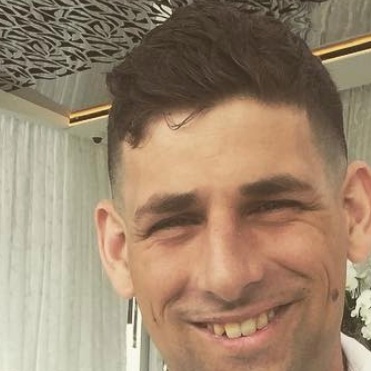
Inspired by Steve's story?
Share your story, too!
Testicular Cancer (Non-Seminoma) Stories
Mikael H., Testicular Cancer (Non-Seminoma), Stage 1
Symptoms: Fatigue, one swollen testicle
Treatments: Surgery (removal and reconstruction), radiation, hormone therapy
Steve L., Testicular Cancer (Non-Seminoma), Stage 3C
Symptoms: Grape-sized tumor on neck; hip and pelvis pain; tumor on right testicle
Treatments: Chemotherapy, surgery (removal of right testicle, lymph node resection, and tumor dissection in the neck)
Hugo T., Testicular Cancer (Non-Seminoma), Stage 2B
Symptom: Pea-sized lump on right testicle
Treatments: Surgery (removal of right testicle, lymph node resection), chemotherapy
Matthew O., Testicular Cancer (Non-Seminoma), Stage 3C
Symptoms: Fatigue, one swollen testicle
Treatments: Chemotherapy, surgery
Steven C., Testicular Cancer (Non-Seminoma), Stage 2B
Symptoms: Enlarged left testicle, tenderness in left testicle, lump in back (retroperitoneum)
Treatments: Surgery (orchiectomy and retroperitoneal lymph node dissection), chemotherapy


